Markov model
- sequence of random variables that are not independent
- weather report
- text
Properties
- limited horizon
- P(Xt+1=sk∣X1,...,Xt)=P(Xt+1=s∣Xt) (first order)
- time invariant(stationary)
- P(X2=sk)=P(X1)
Visible MM
Hidden MM
- Motivation
- observing a sequence of symbols
- the sequence of state that led to the generation of the symbols is hidden
- Definition
- Q = sequence of states
- O = sequence of observations, drawn from a vocabulary
- q0,qf = special (start, final) states
- A = state transition probabilities
- B = symbol emission probabilities
- Π = initial state probabilities
- μ(A,B,Pi) = complete probabilistic model
used to model state sequences and observation sequences
Generative algorithm
- pick start state from Pi
- For t = 1…T
- move to another state based on A
- emit an observation based on B
Example
State probability
Emission probability
Initial
P(A∣start)=1.0P(B∣start)=0.0Transition
P(A∣A)=0.8P(A∣B)=0.6P(B∣A)=0.2P(B∣B)=0.4Emission: see previous table
observation of the sequence “yz”
- Possible sequences of states:
- AA
- AB
- BA
- BB
In this way we could compute all the possibilities of any sequence.
State and transitions
states:
- the states encode the most recent history
- the transitions encode likely sequences of states
- use MLE to estimate the transition probabilities
transitions:
- estimating the emission probabilities
- possible to use standard smoothing and heuristic methods
Sequence of observation
- observers can only see the emitted symbols
- observation likelihood
- given the observation sequence S and the model μ , what is the probability P(S∣μ) that the sequence was generated by that model
- HMM turn to language model
Tasks with HMM
- tasks
- Given a μ(A,B,Π) , find the distribution P(O∣μ)
- Given O,μ , what is (X1.X2,...,Xt)
- Given O and a space of all possible μ , find the best μ
- decoding
- tag each token with a label
Inference
- find the most likely tag, given the word
- t∗=argmaxtp(t∣w)
- given the model μ , we could find the best sequence of tags {ti}n1∗ given the sequence of words {wi}n1
- too many ways for combinations
Viterbi algorithm
Find the best path up to observation i and state s(partial best path), and if we condition on the whole string of i, we will get the best path for the whole sentence.
- dynamic programming
- memoization
- backpointers
initial state
we could calculate the first state P(t=1)
say if we want to calculate P(B,t=2) and calculating P(A,t=2) is similar
and we could find the best path and best sequence of states
finally we could find the best sequence for all observations








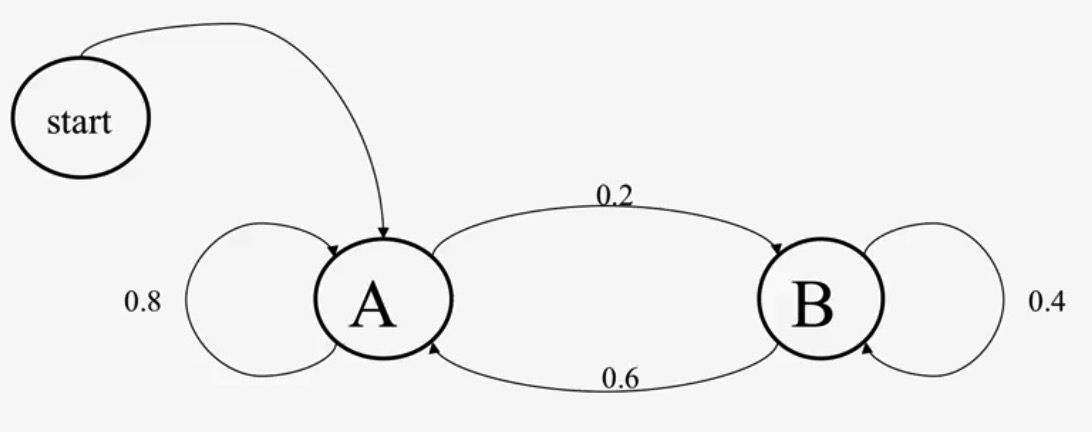
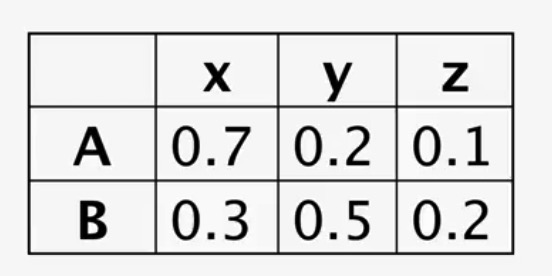
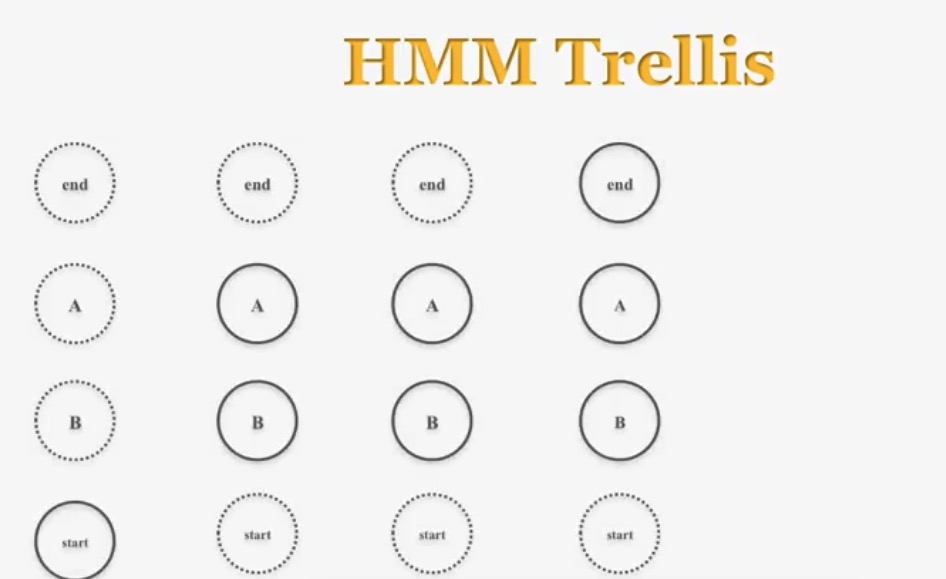
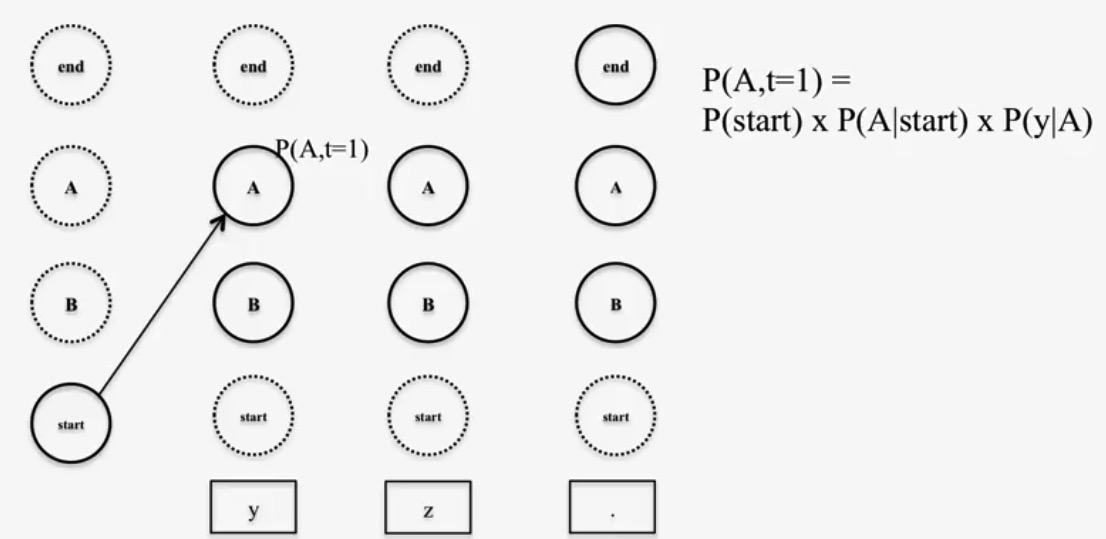

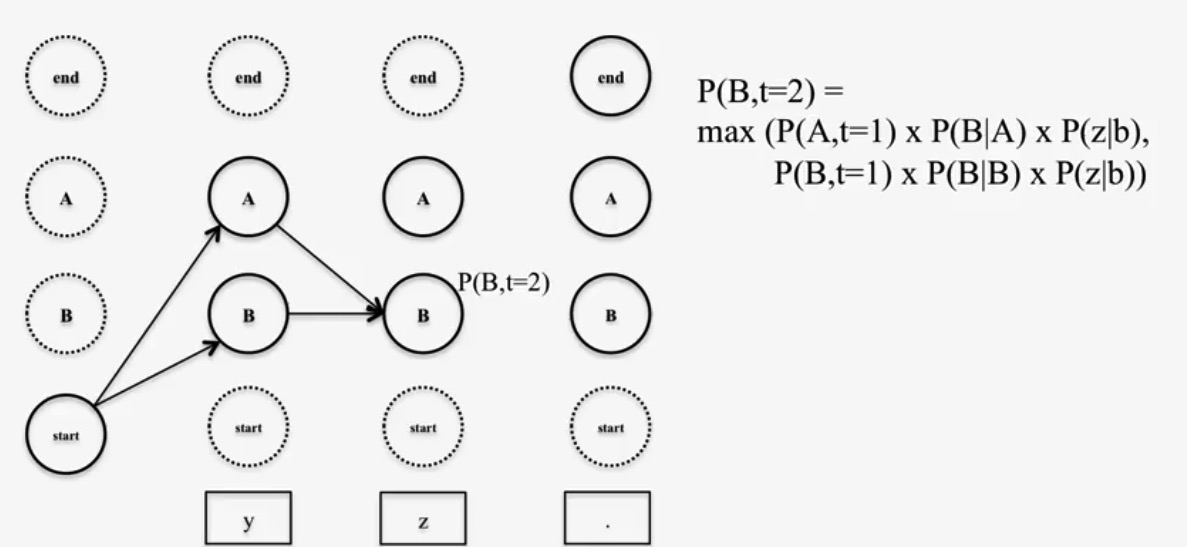
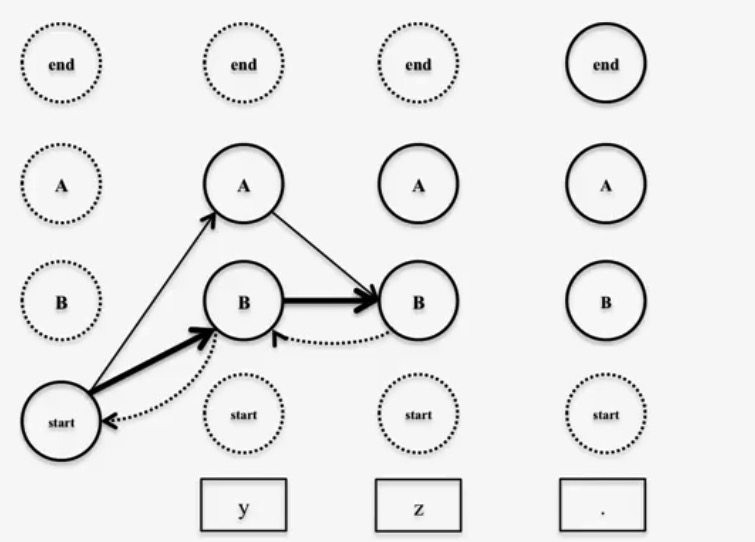
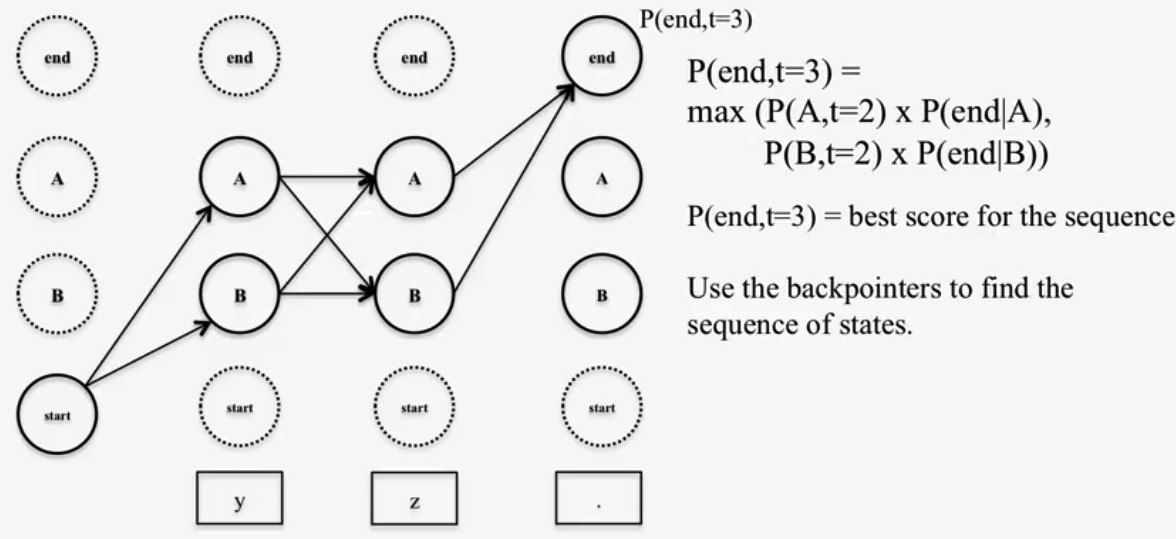














 269
269

 被折叠的 条评论
为什么被折叠?
被折叠的 条评论
为什么被折叠?








